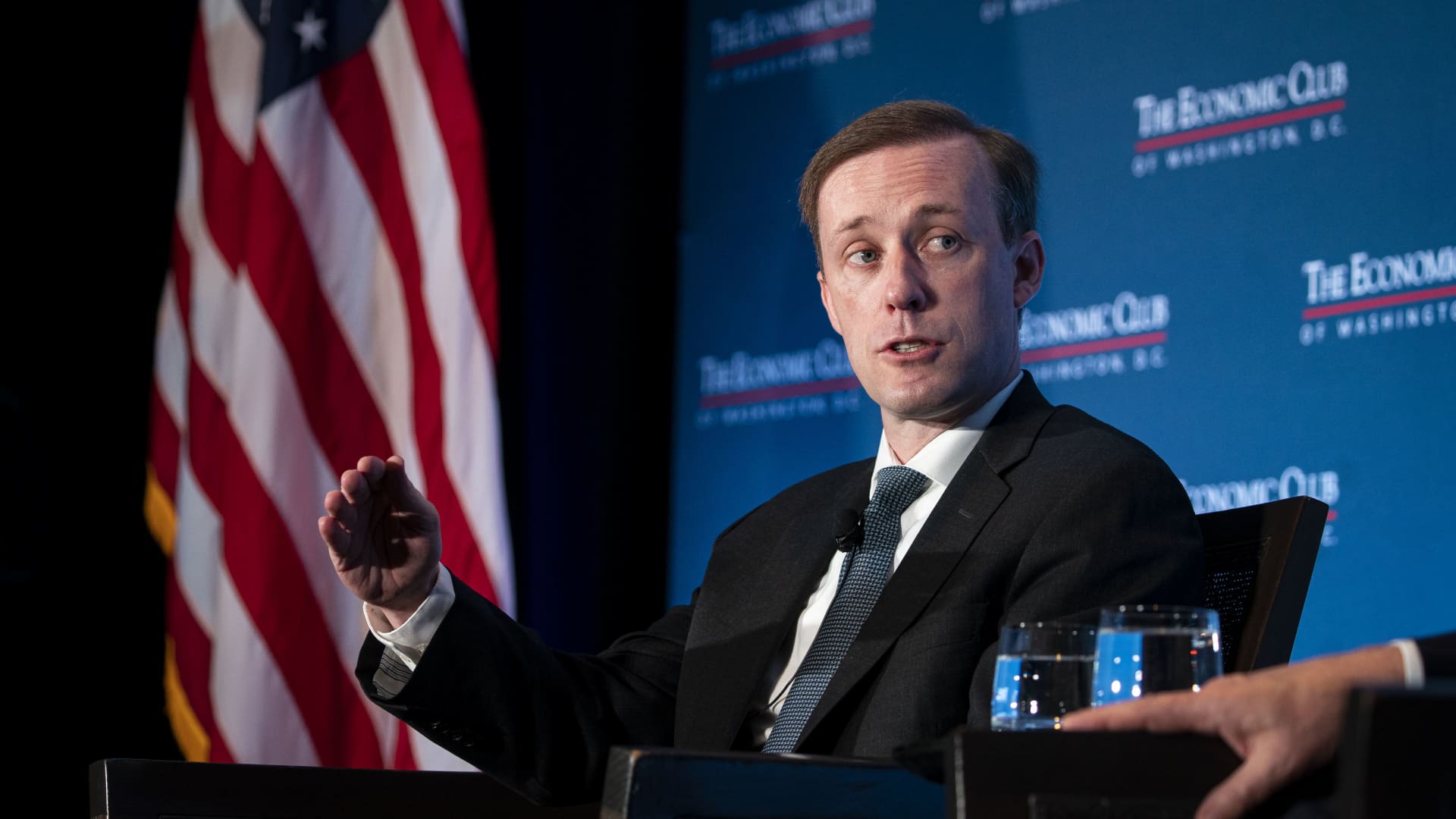August payrolls grew by a less-than-expected 142,000, but unemployment rate ticked down to 4.2%
Nonfarm payrolls were expected to expand by 161,000 in August while the unemployment rate fell to 4.2%.


The U.S. economy created slightly fewer jobs than expected in August, reflecting a slowing labor market while also clearing the way for the Federal Reserve to lower interest rates later this month.
Nonfarm payrolls expanded by 142,000 during the month, up from 89,000 in July and below the 161,000 consensus forecast from Dow Jones, according to a report Friday from the Labor Department's Bureau of Labor Statistics.
At the same time, the unemployment rate ticked down to 4.2%, as expected.
The labor force expanded by 120,000 for the month, helping push the jobless level down by 0.1 percentage point, though the labor force participation rate held at 62.7%. An alternative measure that includes discouraged workers and those holding part-time jobs for economic reasons edged up to 7.9%, its highest reading since October 2021.
The household survey, which is used to calculate the unemployment rate and is often more volatile than the survey of establishments, showed employment growth of 168,000. The balance, though, tilted toward part-time employment, which increased by 527,000, while full-time fell by 438,000.
Markets showed little initial reaction to the data, with stock futures holding negative and Treasury yields also lower.
While the August numbers were close to expectations, the previous two months saw substantial downward revisions. The BLS cut July's total by 25,000, while June fell to 118,000, a downward revision of 61,000.
"I don't like this a whole lot. It's not disaster, but it's below expectations on the headline, and what really bothers me is the revisions," said Dan North, senior economist for North America at Allianz Trade. "This is certainly going the wrong way."
From a sector standpoint, construction led with 34,000 additional jobs. Other substantial gainers included health care, with 31,000, and social assistance, which saw growth of 13,000. Manufacturing lost 24,000 on the month.
On wages, average hourly earnings increased by 0.4% on the month and 3.8% from a year ago, both higher than the respective estimates for 0.3% and 3.7%. Hours worked nudged higher to 34.3.
The report comes with markets on edge over the next step for the Fed, which has been on hold with rates since July 2023 after having enacted a series of sharp increases to bring down inflation.
Heading into the release, markets had been pricing in a 100% probability that the Fed will start cutting rates when it meets Sept. 17-18. The only question was how much.
Following the payrolls release, futures market pricing briefly tilted towards a half percentage point cut but then switched back to a quarter point, according to the CME Group's FedWatch gauge.
"For the Fed, the decision comes down to deciding which is the bigger risk: reigniting inflation pressures if they cut by 50 [basis points] or threatening recession if they only cut by 25 [basis points]," said Seema Shah, chief global strategist at Principal Asset Management. "On balance, with inflation pressures subdued, there is no reason for the Fed not to err on the side of caution and frontload rate cuts."
The recent narrative for the economic data has indicated continuing growth but a slowdown for the labor market. Payrolls processing firm ADP reported Thursday that private companies added just 99,000 jobs in August, while outplacement firm Challenger, Gray & Christmas reported that layoffs surged in August and hiring had hit its slowest year-to-date pace going back to at least 2005.
The BLS report indicated that the private sector added 118,000 jobs for the month, up from 74,000 in July. Government jobs increased by 24,000.
Most Fed officials have indicated that they also see rates coming down. In his pivotal annual speech at the Fed's annual Jackson Hole, Wyoming, conclave, Chair Jerome Powell proclaimed that "the time has come" to adjust policy, though he provided no specifics for what that meant.
In a speech Friday morning, New York Fed President John Williams endorsed rate cuts.
"With the economy now in equipoise and inflation on a path to 2 percent, it is now appropriate to dial down the degree of restrictiveness in the stance of policy by reducing the target range for the federal funds rate," Williams said in remarks before the Council on Foreign Relations in New York.

 ValVades
ValVades 





























